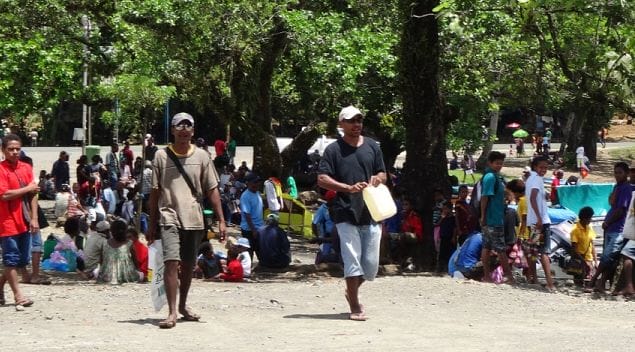General Style Tips
- Papua New Guinea enjoys a tropical climate – i.e. high temperatures and humidity.
- Our advice would be to take a lightweight, casual wardrobe of loose-fitting, natural fabrics e.g. linen, silk or cotton, that will keep you cool and are easier to wash and dry.
- Casual, comfortable and conservative clothes are the key. Dress down rather than up here. Short, tight or revealing clothes should be avoided.
- Wear plenty of sunscreen (we love the Riemann P20 range for 10 hour protection), sunglasses and a sunhat.
- Take plenty of insect/mosquito repellent and wear long sleeves and pants, particularly in the evenings, to avoid being bitten.
What Shoes To Pack
- For all but serious walking lightweight walking shoes or sneakers are fine, and you will need comfy footwear for exploring. We love Hotter shoes, for total comfort along with style.
- Why not try the Lindsay Phillips Switch Flops range – using interchangeable shoe and flip-flop bases with snap-on decorations, you can change your look from day to evening in an instant whilst still packing light.
- If you are exploring exposed reefs at low tide then dive shoes re great for protecting your feet.
Clothing Tips For Women
- Take care not to offend local sensibilities – this is really important, and whilst it's fine to wear bikinis and brief swimwear in resorts, it's definitely not ok elsewhere. At such times cover up. Also note that topless sunbathing is illegal.
- The humidity can play havoc with your hair – so think about accessories or a scarf to keep it looking neat and tidy.
- Leave your valuables and smart jewelry at home, you really won't need them. A few well-chosen pieces of costume jewelry will transform any outfit if you like.
- And a pashmina or sarong is a versatile piece that will dress up any outfit too, plus you can use it as a modesty cover or to shield you from the sun.
Clothing Tips For Men
- If you're looking for versatile and stylish beachwear, try the Madda Fella range of shirts, shorts, polos and swimwear.
- For great versatile travel jackets with multiple pockets including RFID security options, we love the SCOTTeVEST range.
Pack For The Weather
- The temperature is not the issue here as much as the rainfall. The rainy season of December, January, February and March is when typhoons are possible. Pack a lightweight raincoat – it only needs to be light because even when it's raining it will still be warm.
- In fact apart from perhaps the dry season (June, July, August and September) it’s as well to pack a light waterproof and travel umbrella at other times too.
- We love the Weather+ app – it gives an accurate 6 day forecast for day and night, which when you're planning from home is really helpful. You can keep all the places you've been to too – a nice way to remember your trip 🙂 Download foriPad/iPhone or Android
Regions Of Papua New Guinea
- If you plan on walking in the mountainous interior then good, supportive and comfortable walking boots are a must and take a fleece too.
Other Things To Pack
- Tap water quality is acceptable in most towns, but in rural areas don't drink or even brush your teeth in it. For peace of mind consider taking a LifeStraw Filtration Water Bottle – you can fill up from any source for clean, safe water without wasting plastic bottles.
- If you're aiming to travel with just carry-on baggage or will be moving from place to place, try the CabinMax soft-sided rucksack – it's light, roomy and has plenty of pockets to keep your stuff organized. Using packing cubes can help to keep your belongings tidy whilst compressing the volume too.
- Combine your main bag with a day sack or beach bag that will carry your daytime essentials.
- Look after your mobile phone with a phone bunjee – it protects against loss, theft and damage. A solar powered charger can be a good idea too, as a back-up for your battery.
- To use electrical gadgets you may need a travel adapter plug, and also a step down voltage converter if your devices are not designed for the local voltage (240V).
- Avoid paying unexpected baggage fees – use an accurate luggage scale to ensure you keep within the weight allowance. Don't forget to leave room for souvenirs on the way home! There are various unusual handicrafts to tempt you – look for bilums (string bags), wooden bowls and patterned baskets.
